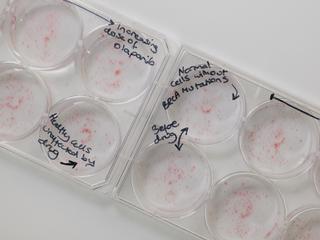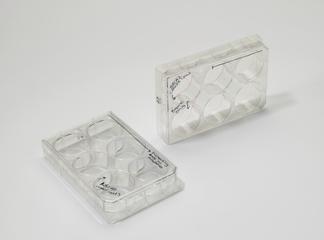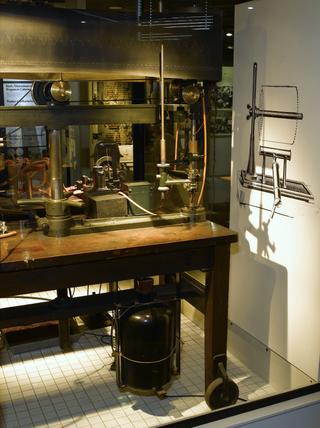
Radiometer for taking solar radiation measurements, used on 1953 Mount Everest expedition
- Made:
- 1952-3 in unknown place








Radiometer for taking simple solar radiation measurements, used by Dr Griffith Pugh to provide physiological data for and during the Mount Everest expedition of 1953, United Kingdom, 1952-3.
What does it take to climb Everest, the world’s tallest mountain? Mount Everest is an incredibly harsh environment. At the summit temperatures can drop as low as -30°C during the summer climbing season and even at the middle camps between 6,000 and 7,000m temperatures in the summer range from -15°C to -5°C. However, Everest also experiences intense solar radiation. The snow-covered slopes of the Himalayas reflect and magnify sunlight, and solar radiation is greater than at higher altitudes. This means there can be significant temperature variation between at night and in the shade, and in the sun during the day. Climbers on Everest report feeling very warm even at significantly high altitudes due to the effects of the sun. This radiometer was set up in the mouth of an ice cave and gave readings of solar reflection from the snow on slopes opposite.
By the 1950s, there had been several attempts to summit Everest and some climbers had got very close, but none had made it. The pioneering research of Dr Griffith Pugh was a key factor in the success of Edmund Hillary and Tenzing Norgay’s climb in 1953. Pugh’s background made him uniquely suited to this work. He was a practising doctor, but also a world class skier. He was selected to represent Great Britain in skiing at the 1936 Winter Olympics, but he was unable to attend due to injury. He also trained soldiers at the School of Mountain Warfare in Lebanon during the Second World War. It was here that Pugh began to research the impact of high altitude and extreme conditions on the body, leading to his work on Everest. Pugh took part in the expedition to Everest in 1953 and the preparatory expedition in the Himalayas in 1952, believing that laboratory research could not accurately recreate the experience of being in these extreme environments. His work established principles about acclimatising to altitude, food and water consumption during climbs, and oxygen usage that continued to be used by climbers for decades.
Details
- Category:
- Laboratory Medicine
- Object Number:
- 2017-48
- Materials:
- copper (alloy), steel (metal) and plastic (unidentified)
- Measurements:
-
overall: 114 mm x 215 mm x 110 mm,
- type:
- radiometer
- credit:
- Simon Pugh




